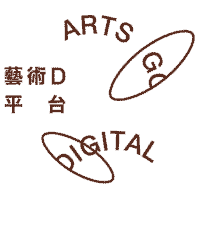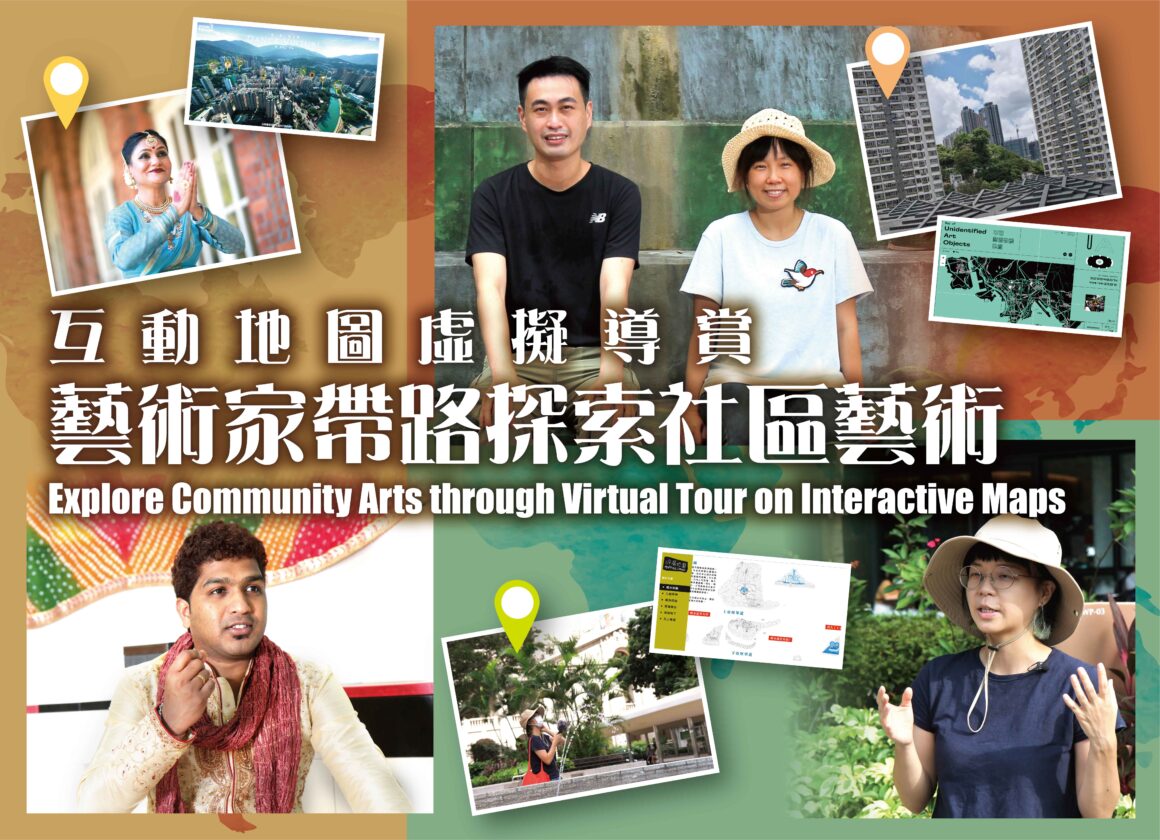“give full play to their creativity and design map websites to guide people to visit the community from a different perspective through sounds, pictures and images.”
Chinese text: Eugene Chan
Numerous guided tours were held by various arts groups to explore the beauty of community arts during weekends in the past. However, under the pandemic, face-to-face interaction between artists and the audience is no more frequent. How can the audience still feel being on-site even staying at home? This interview series reveals how arts groups and artists, supported by the “Arts Go Digital Platform Scheme”, give full play to their creativity and design map websites to guide people to visit the community from a different perspective through sounds, pictures and images.
Searching Every Nook and Cranny for Unidentified Community Art Objects
One of the projects was the “Map of Unidentified Art Objects”, whose mysterious name might be reminiscent of UFOs. The website showed an aqua green map of Hong Kong sparkled with white pentagrams, which marked more than forty locations of “unidentified art objects” picked up by 11 local contributors.
These “unidentified art objects” are located across the city, some are of unknown origin, some have mysterious appearance, and some are just misfits to the surrounding environment. These include the idol clusters on Mount Parker, the bronze statue of a nameless child outside the Hong Kong Central Library, the pyramid-shaped construction atop the carpark of Chun Shek Estate in Tai Wai, etc.
Artist Luke Ching has found “Hong Kong’s tiniest landfill and biggest money box” – the roaring lion statue Stephen at HSBC Headquarters Building in Central. The bullet or shrapnel scars in Stephen’s left hind-quarters dated back to days of Japanese Occupation. When Luke Ching looked into the wound, he found both litter and coins.

Trash and coins were found under the lion statue standing outside HSBC Headquarters Building in Central by artist Luke Ching. (Photo by Luke Ching, provided by the interviewee)
This project was initiated by Thickest Choi, Centre Executive of Centre for Research and Development in Visual Arts under Academy of Visual Arts of Hong Kong Baptist University. Artists, urban studies scholars and members of the community were invited to contribute to the website. “Is public art necessarily a statue? If something appears just for a short time but has great significance to the community and becomes the memory of the times, is it public art? I want to redefine it,” Thickest said.

Thickest Choi (left) has invited artists like Helen Fan (right) to contribute and explore outdoor artworks in the public realm. (Photo by Cafe Tong)
One of the contributors Helen Fan is an arts practitioner and playground researcher. She has picked a small chestnut-shaped stone mound in Choi Po Court Playground in Sheung Shui. There is a balance beam linking up the two ends of the “chestnut”, and colourful wooden stalks along the “ridge”. She found out that the facility was built in the 1980s. The mound was made into a chestnut shape in order to circumvent a big tree in the middle of the park. “I like this design idea, simple but loving. The tree provided people with a shady place. It fell down during the passage of Typhoon Mangkhut and crushed the slide on the mound. Hence both the tree and the slide had to be removed,” Helen said.
Thickest Choi was an old neighbour in Sheung Shui. He recalled his childhood days when in the Mid-Autumn Festival, children played with lanterns and burned wax there. Helen opined that a well-designed playground had its artistic value and was useful to people of different ages. This rendered a profound meaning to the community and should be regarded as public art.
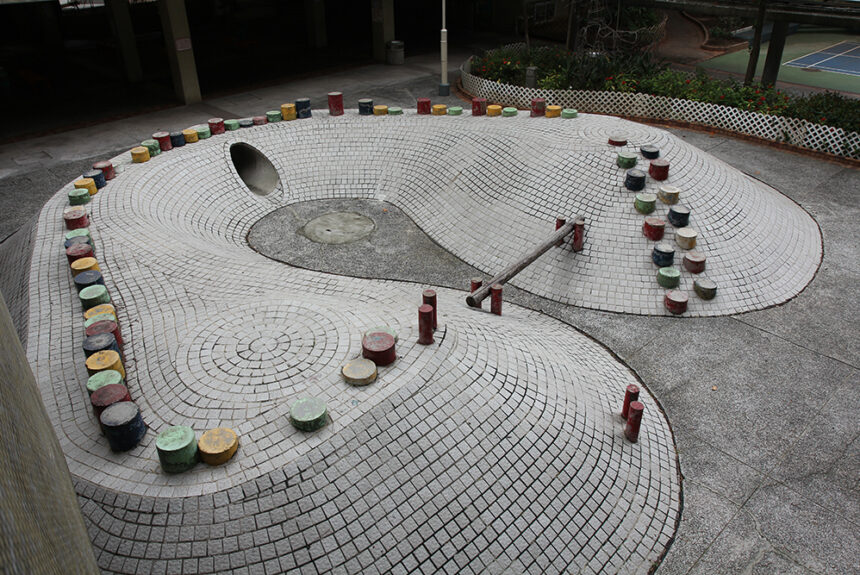
The chestnut-shaped rockery in Choi Po Court Playground in Sheung Shui is popular among the neighbourhood. A large banyan tree used to grow right at the middle of the chestnut, but it fell in 2018 during Typhoon Mangkhut. (Photo by Cafe Tong)
The launch of the interactive website let Thickest realise that people’s views on public art were very interesting. “The interesting thing about this website is that it doesn’t need to be too serious. Usually public art seems to be something ‘high’ and not fun. Yet, clearly public art is something for the public,” Thickest said. “Why should it be scholarly and restrained?”
Helen jokingly remarked that the project was “doing petty things seriously”, “particularly at present when the social atmosphere of Hong Kong is poor and people are unhappy. If you can appreciate these strange things from a somewhat perspective, you will realise that the city is still rich, and you will feel better!”
Thickest hoped that the content of the map would continue to expand and that everyone would pay more attention to the community around both to record little-known outdoor sculptures, installations and arts in public spaces and foster a sense of identity.

“Unidentified Art Objects” do not stand at museums, but housing estates, parks and trails. This is an idol cluster on the hiking path running between Mount Parker and the Quarry Bay Jogging. (Photo by Human Ip, provided by the interviewee)
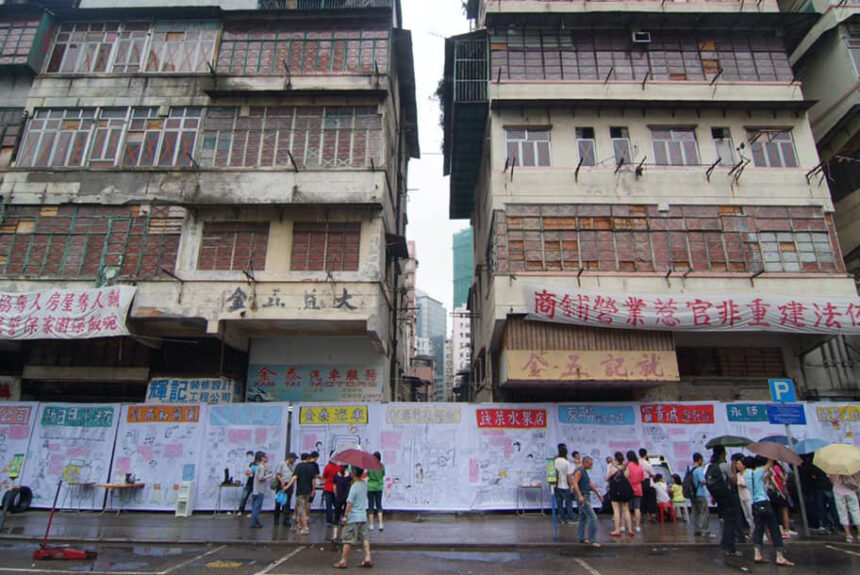
Theatre practitioner Indy Lee contributed community artworks made by Chinese house citizens and shopkeepers in Hing Wah Street, Castle Peak Road, Un Chau Street and Cheung Wah Street in 2005, before buildings were demolished for urban development. (Photo by Yuen Chi-yan, provided by the interviewee)
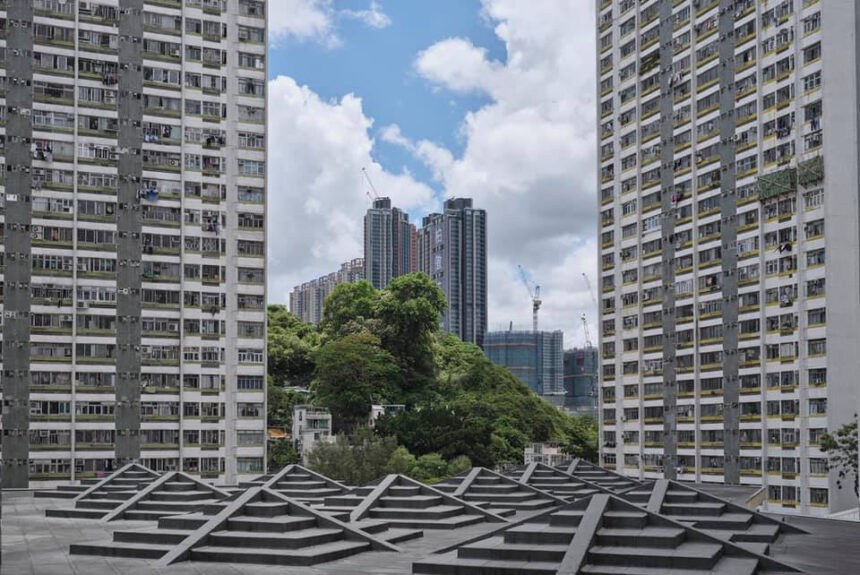
Artist South Ho contributed the pyramid-shape rooftop of the Carpark in Chun Shek Estate of Shatin. It is not accessible for the public, but he once saw young people abseiling to and gathering on the rooftop. (Photo by South Ho, provided by the interviewee)
Illustrations and Audios that Record the Quiet Side of Hong Kong
“Mapping Corner” is another project discovering the characteristics of Hong Kong with maps. Jess Lau, a media and illustration artist partnered with Lam Kin-choi, who was good at illustration, to produce a website which consists of six hand-drawn maps, namely Map of Fountains in Central, Map of God-worshipping in the Temples in Wan Chai, Map of Piers along Victoria Harbour, Map of Feral Pigeon Spots in Hong Kong, Map of Subways in Hong Kong, and Map of Footbridges in Tsuen Wan. They intentionally dropped precise map scales and added illustrations on historical anecdotes to reflect the process of urban planning.
“Mapping Corner” shows most locations along with live audio recordings so that viewers at home can learn about the activities of the citizens there with the sounds. By the fountain in Connaught Place in Central, you would hear the sounds of gurgling water and expatriate maids talking aloud; in the Hindu Temple in Wan Chai, you would hear the scripture chanting during the Sunday gathering.
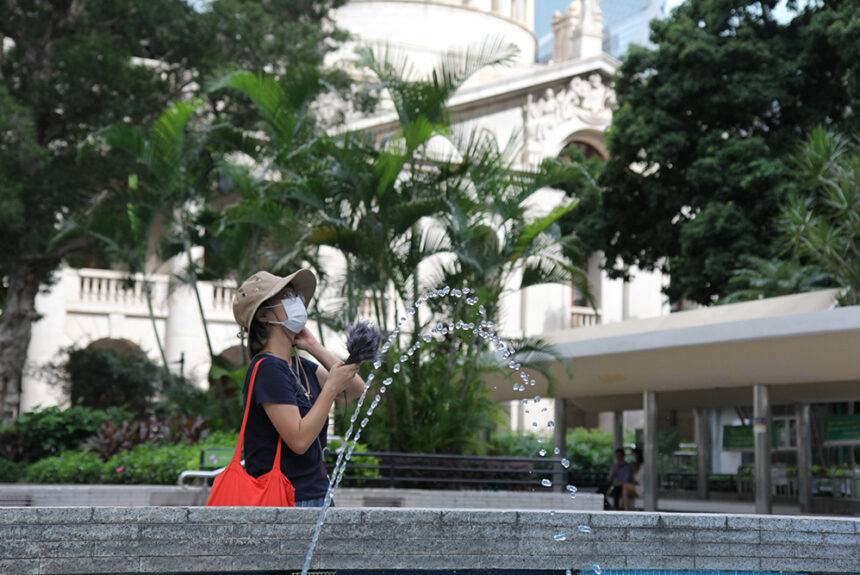
Sound is an important element in “Mapping Corner”. Recording of the environmental sounds can lead website users to “step” into the location. (Photo by Cafe Tong)
Jess had travelled across the city to record sounds for the maps and discovered another side of Hong Kong during the pandemic. “I recorded a quiet Hong Kong with no tourists. Shops were not as busy as before. Moreover, as we drew instead of taking photos, shop owners felt more relaxed and were curious about what we were drawing. They even spent some time chatting with us. This made our work process smoother,” Jess said.
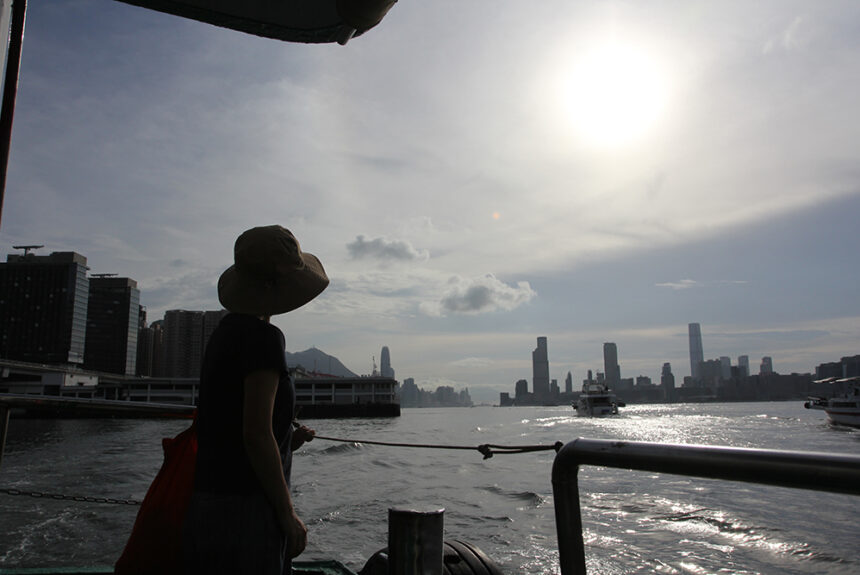
Going around the city to make maps during the pandemic, Jess Lau has discovered the quiet side of Hong Kong. (Photo by Cafe Tong)
Besides providing audience with a sense of the live environment on the Internet, Jess, also a community artist, had a greater wish: “We hope that, after going through the community maps at home, website visitors would be interested in those topics and make their own maps, drawing their own communities and things they care about.”
Jess used to visit schools and taught students to produce community maps by visiting old shops in the district and interviewing residents in the neighbourhood. “There are a lot of things to learn when preparing maps: data collection, content selection, charting and scaling and many more,” she said.
She also put it frankly that without funding from Arts Go Digital, it would be impossible to have the resources to produce these unconventional maps. She hoped that more primary and secondary schools would learn about this project and use this map website as a teaching material. When school workshops resume in future, students will find it easier to make a map.

Jess Lau hopes that “Mapping Corner” can become a teaching material for secondary and primary schools to encourage students to make their own maps. (Photo by Cafe Tong)
Turning Tai Po Monuments into Indian Dance Stage
A map enables people to know about the community and can also be used to introduce a dance style. Located at Tai Po Arts Centre, dance company BEYOND Bollywood has produced an interactive website called “Dance Virtual@TAI PO” during the pandemic, marking landmarks with relevant brief history on the 360-degree aerial photos of Tai Po.
With the application of Virtual Reality (VR), the audience can watch ensemble dance performances on the Kwong Fuk Bridge, as well as different Indian dance performances in historical sites, such as the Man Mo Yee Tai Temple and Old District Office North. Moreover, short teaching videos on basic Indian dance moves are available on the website. The audience could adjust the speed of the videos and learn how to dance at home.

A dozen of dancers dance on Kwong Fuk Bridge in Tai Po. Under the strong beats, they perform Bollywood dance, tap dance and Kathak dance. (Photo by Karen Chow, provided by the interviewee)
Performing Indian dance in ancient monuments seemed surreal to many people but not Uday Sathala, Co-founder and Artistic Director of BEYOND Bollywood. “Since ancient times, Indian dances had been mostly performed before the royal families in palaces or in temples for religious ceremonies and celebrations. This was similar to Chinese classic dances in ancient times,” Uday said.
Yet, this was his first time to dance outdoors in Hong Kong. Last December, Uday and a dozen of dancers were filmed dancing on Kwong Fuk Bridge. The dances included Bollywood dance, tap dance and Kathak dance, attracting many residents in the neighbourhoods to stay watching and taking photos.

As a Tai Po Arts Centre tenant, BEYOND Bollywood joins hands with its neighbour STEP OUT Studios, a tap dance troupe, to perform in a video, making the video a fusion of Eastern and Western dances. (Photo by Karen Chow, provided by the interviewee)
As a seasoned dancer for more than 20 years, Uday still had to pay special attention to many details during the shooting. For instance, as the shooting applied VR lens to make a 180-degree video, he had to arrange dancers’ positions to avoid them getting too close to the lens, otherwise, they would look bigger and such distortion would spoil the viewing experience.

Indian dance teacher Uday Sathala would consider the linkage between the dances and the historical sites when they choreographed. (Phote by Cafe Tong)
Benis Cheng, Co-founder and Programme Director of BEYOND Bollywood, has learnt Indian dance for more than ten years and hoped to promote it in Hong Kong. “Indian dance has many varieties. There are different ethnic dances in each of the 28 states in India. People in Hong Kong are more likely to enjoy Bollywood dance which combines classic Indian style and modern elements,” Benis said.
She further said that the dance teaching videos on the interactive website demonstrated some basic introductory dance techniques, which aimed to arouse the interest of the public. In fact, comprehensive learning of a dance style had to be in the studio. Rather the public could learn about the history of Tai Po through the appreciation of Indian dance, which would be helpful in promoting this dance.

Benis Cheng is happy to see that more Bollywood movies are screening in Hong Kong, arousing Hong Kong people’s interest in Bollywood dance. (Photo by Cafe Tong)
Related Projects :
- “Map of Unidentified Art Objects” : Experience now / Learn more
- “Mapping Corner” : Experience now / Learn more
- “Dance Virtual@TAI PO” : Experience now / Learn more
